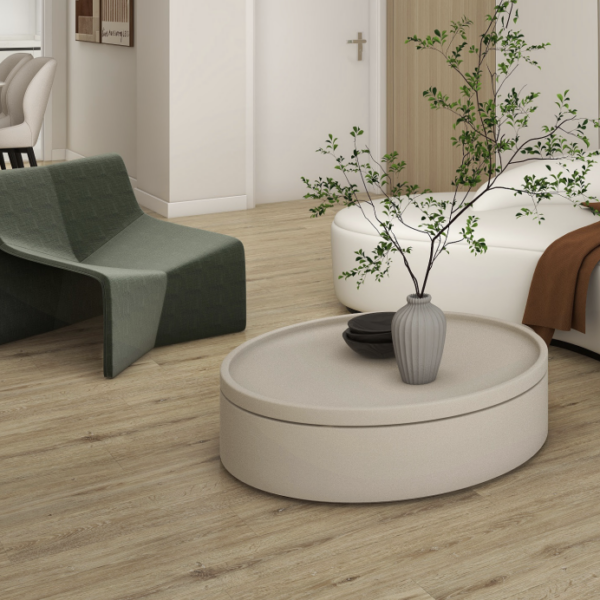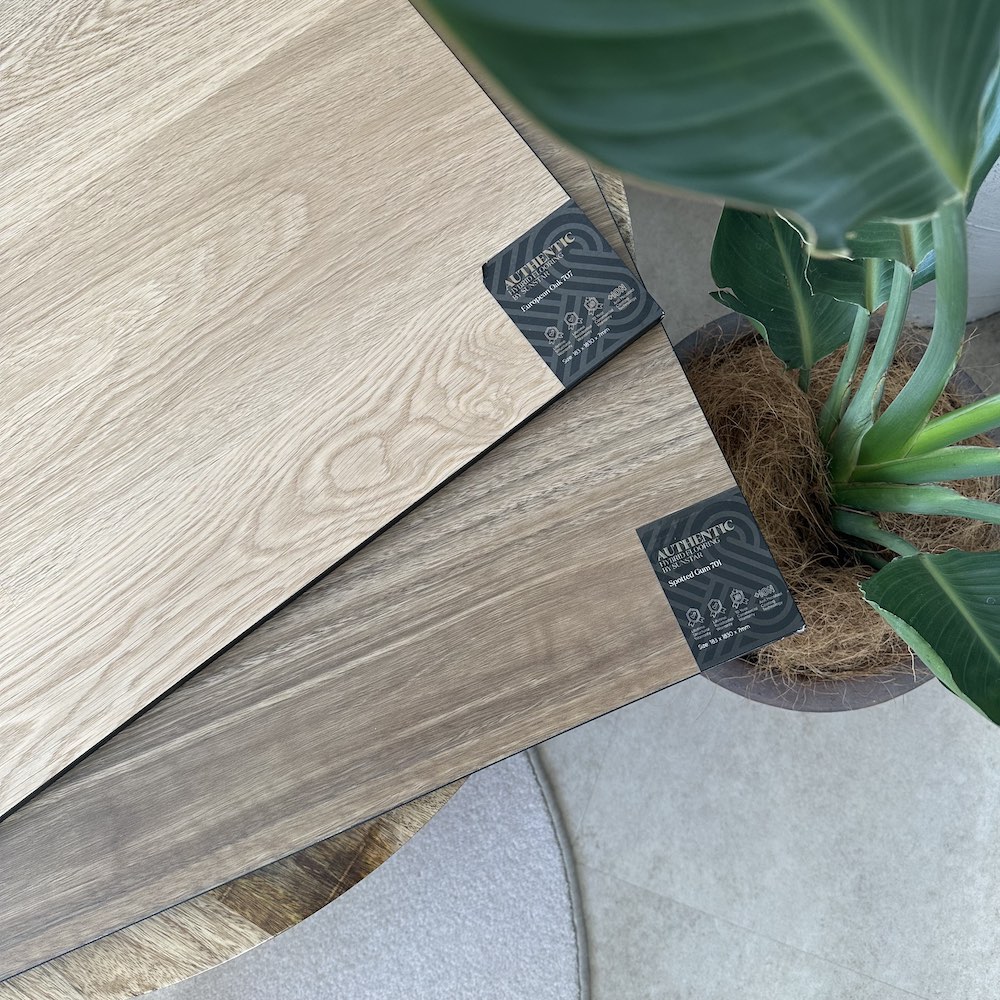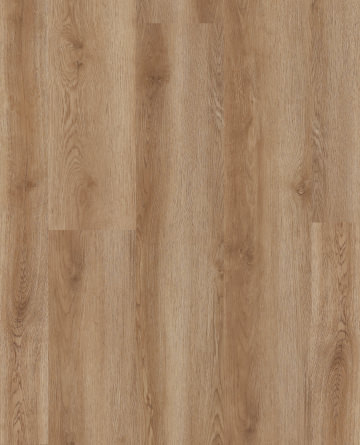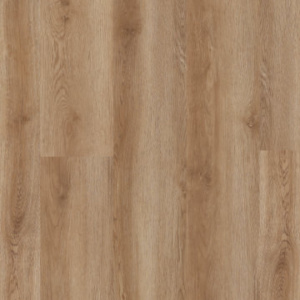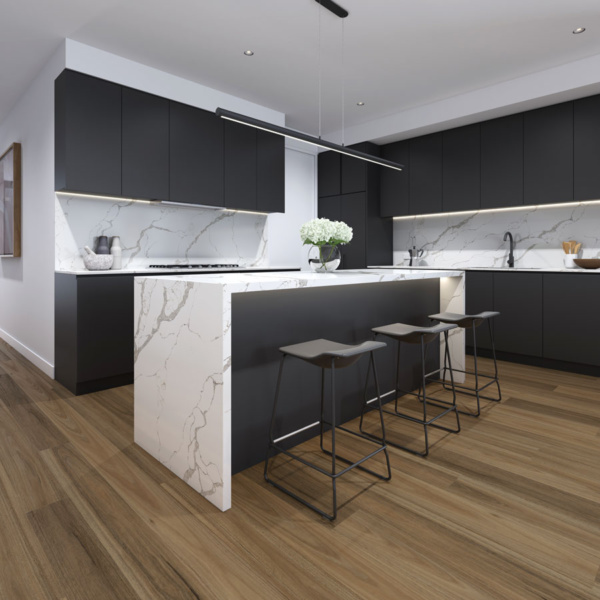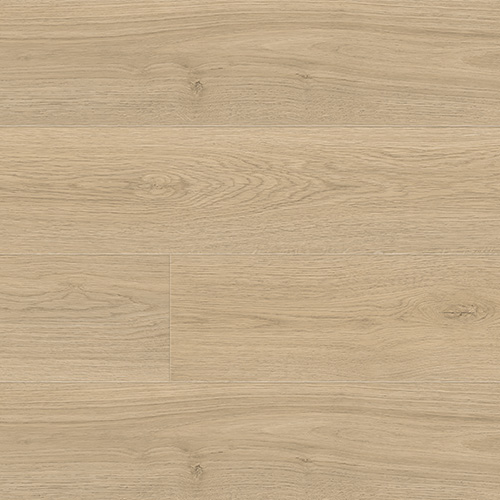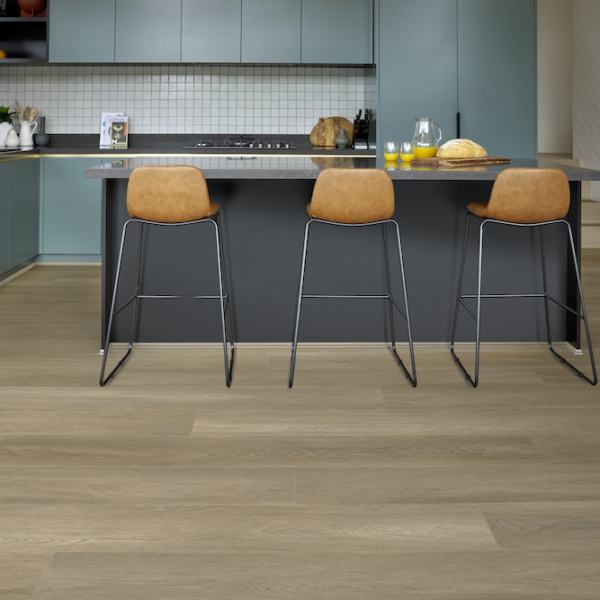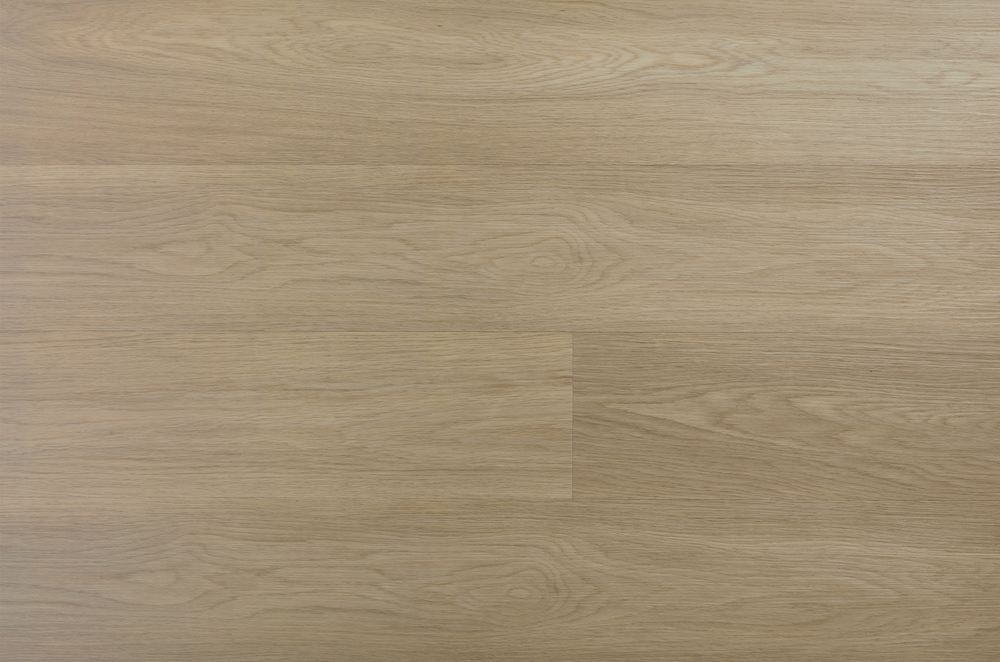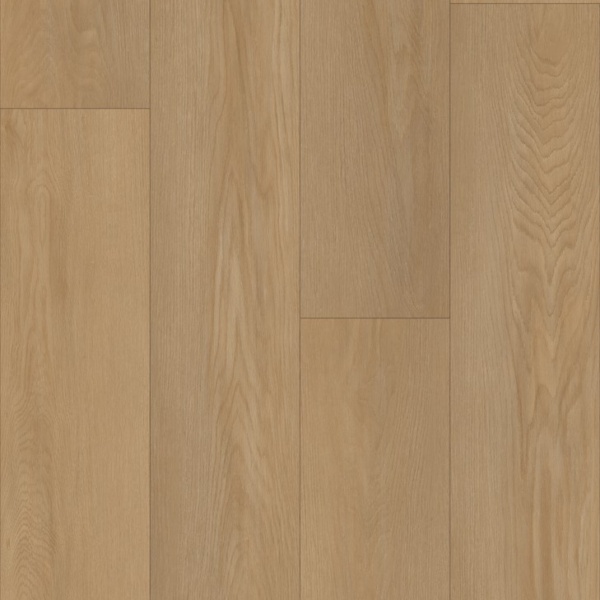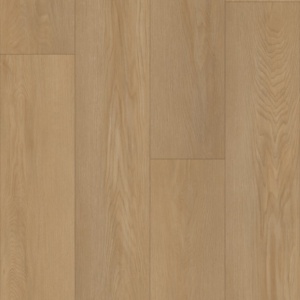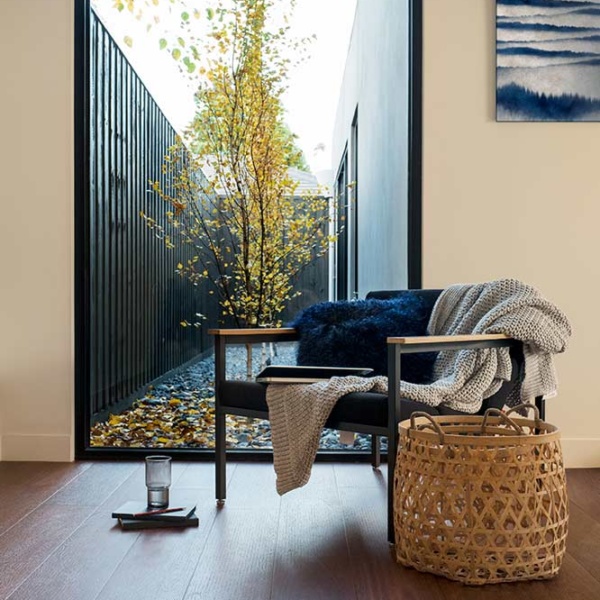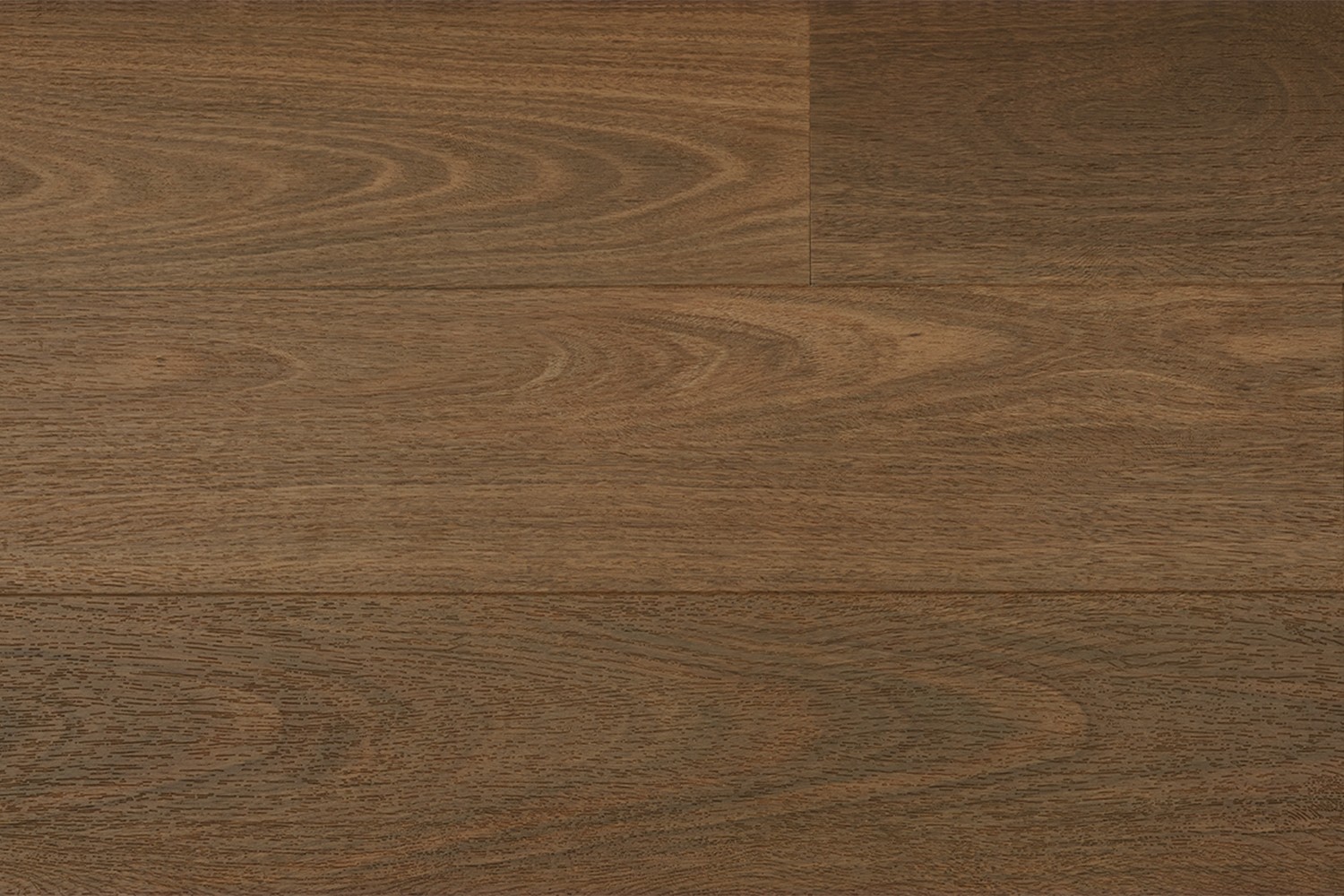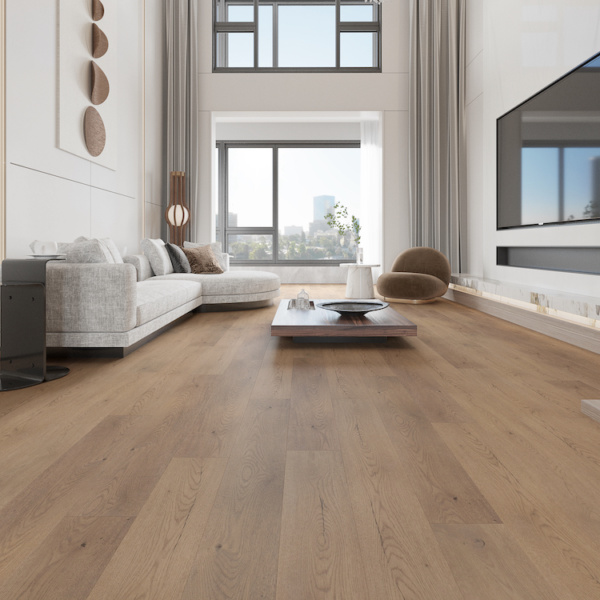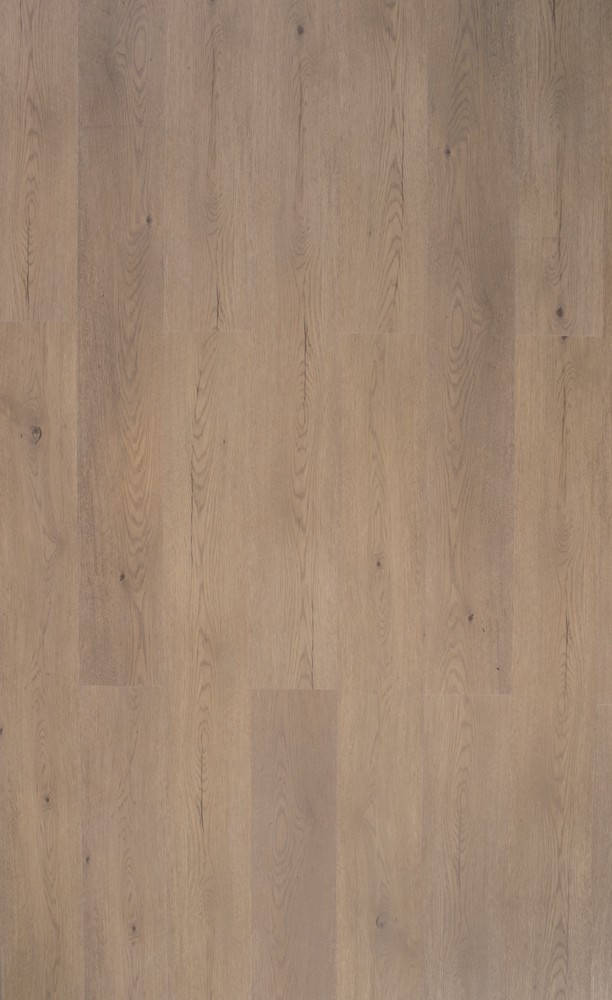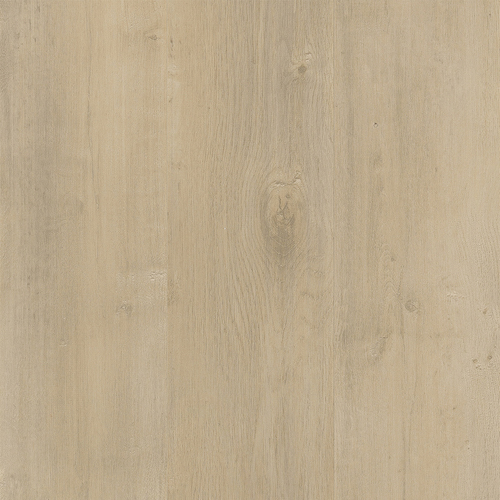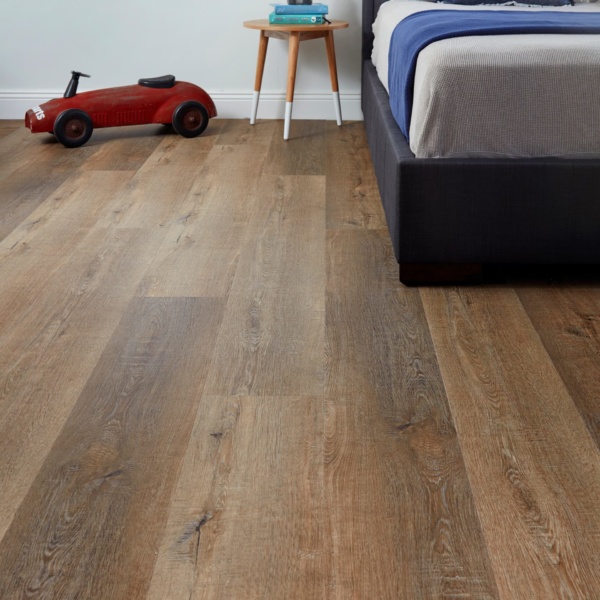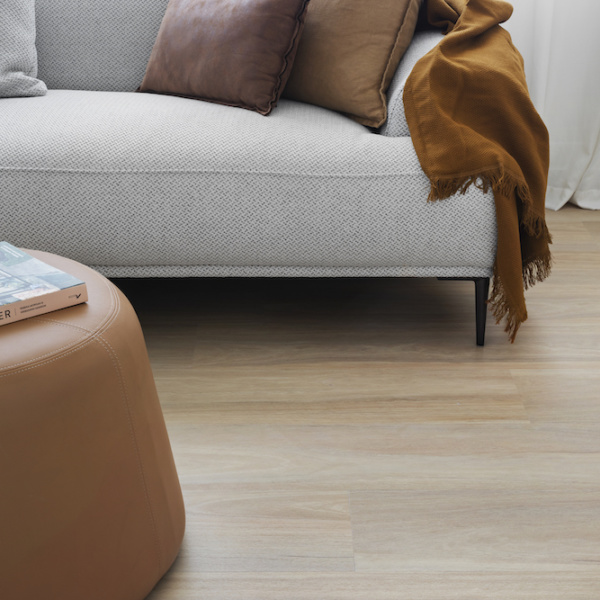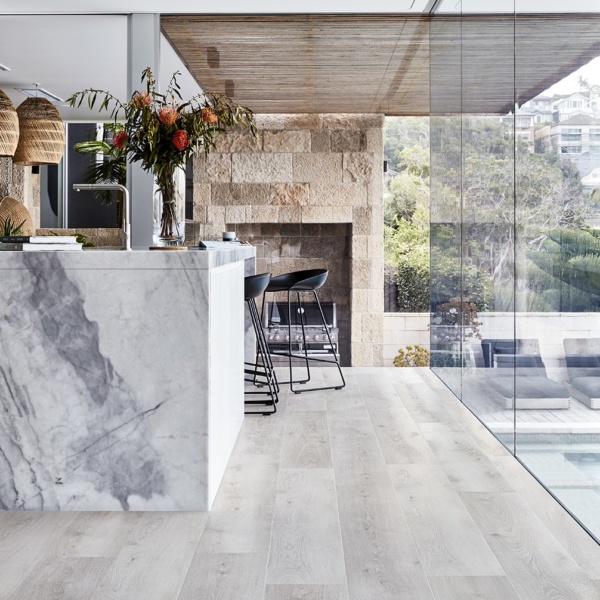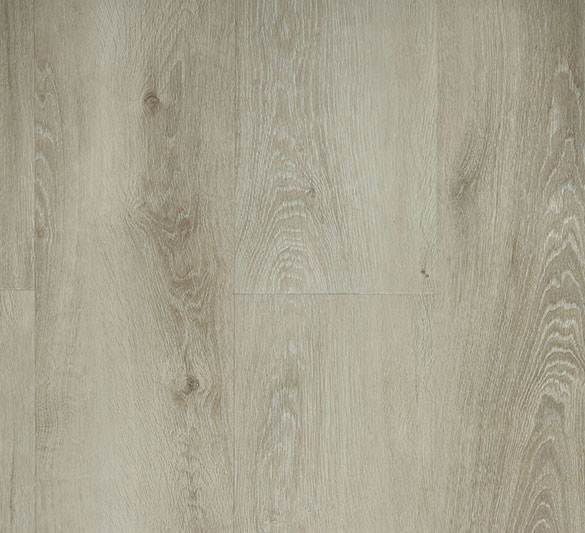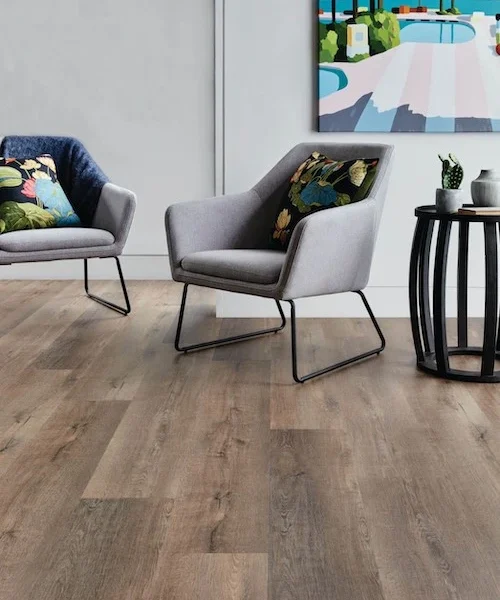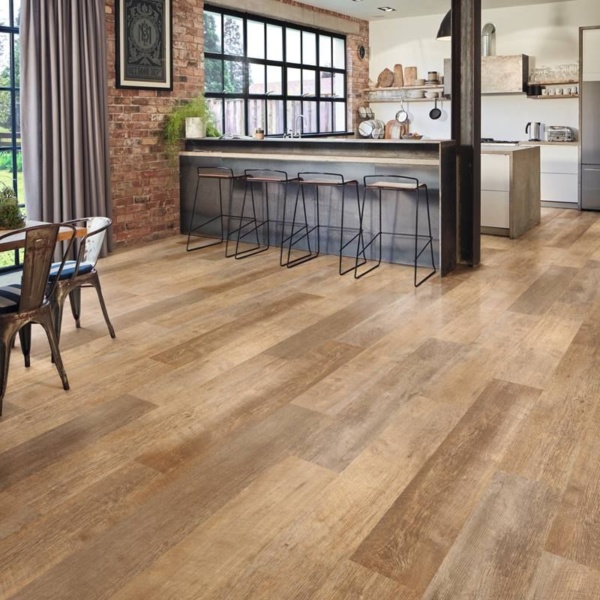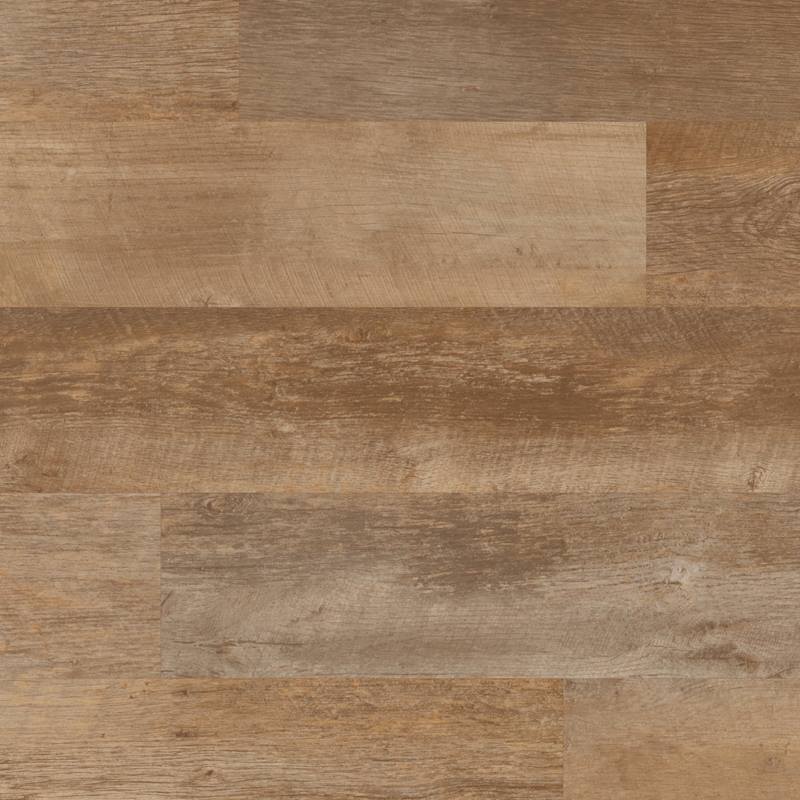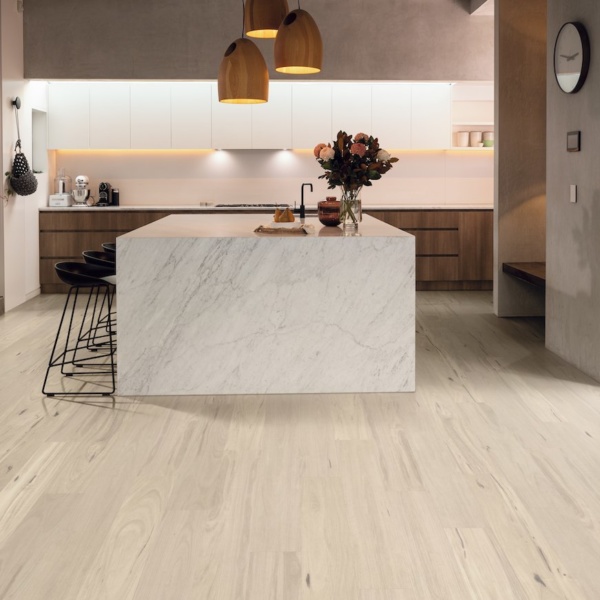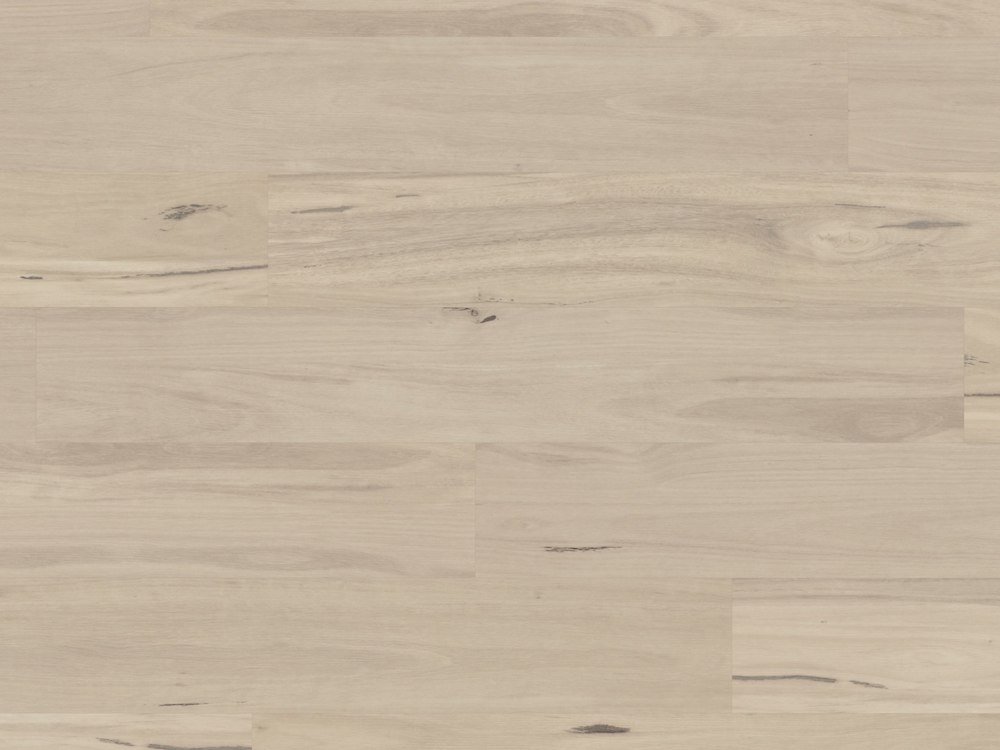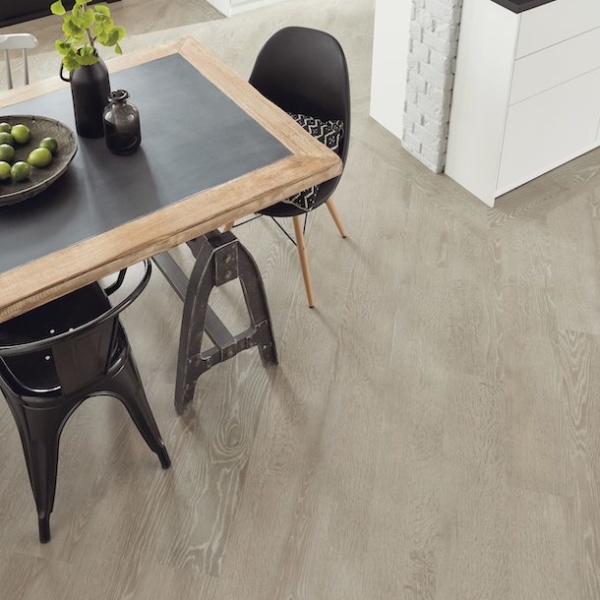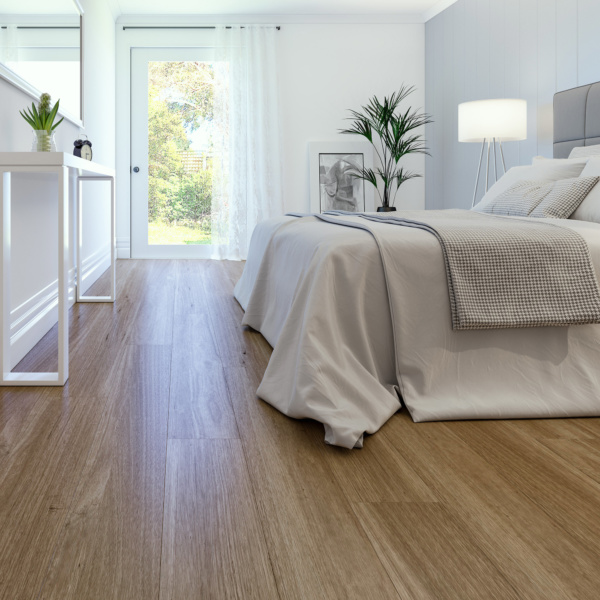Hybrid Flooring Gold Coast
If you’re looking for a floating flooring solution, then Hybrid planks are a popular choice for Gold Coast renovators.
Low maintenance, hybrid floors are perfect for those who have a busy home with children and pets and are not ready to take on the upkeep of timber flooring. Depending on the planks you choose, hybrid floors are easy to clean, are stain and scratch-resistant, and with matte finishes, can be slip-resistant too.
As hybrid flooring is a digitally rendered product, the pattern that you see is what you get, allowing you to achieve a uniform appearance throughout your renovation. If you’re wanting a simple and clean look floor in your home, hybrid flooring will give you the consistent look from the lounge to the hallways to the kitchen, making your interior design flow throughout your home.
If you’re looking for a more low maintenance, waterproof flooring solution, we recommend visiting our vinyl flooring page. For a more structurally sound solution, we recommend installing laminate flooring.
Hybrid Flooring Installation
When it comes to installing hybrid flooring, we recommend hiring a professional flooring installer—avoiding a DIY disaster now and throughout your renovation. Like any flooring, Hybrid comes with its own complexities, so it’s important to get the little details right. For a long-term, reliable flooring solution, recommend installing vinyl and laminate flooring where you’ll benefit from:
- Maintaining your Manufacturer’s Warranties/Guarantees.
- Reducing the risk of potential DIY issues in the future (like those caused from silicone beading)
- Having a local point-of-contact post installation.
- We have over 30 years experience, specifically in the flooring industry.
- The expert knowledge of the Gold Coast’s best flooring installers.
- Knowing your floor preparation and sufficient perimeter expansions have been completed properly.
Polished finishes that only professional install can deliver.
Floating Hybrid Floors Gold Coast
Floating floors are not the type of floors but the method used when installing hybrid floors, ideal for Gold Coast homes.
With the added benefit of a very quick installation time, our expert team can also walk you through the large range of colours, patterns and sizes of hybrid flooring.
Our wide range of hybrid flooring choices allow you to choose the best hybrid flooring option for your Gold Coast home. Take a closer look at our range of low maintenance and family-friendly hybrid flooring options today.
As commercial builders, we struggled for years to find a flooring company that was reliable with a high standard of finish. Since using One Source Flooring for all of our carpet tile, sheet vinyl and vinyl plank installations we have never once had an issue. Aarons communication is efficient and timely and his team always arrive on-site the day they are scheduled to attend.
If we are uncertain about a product or an install matter, we know we can call on Aaron to have a chat any time. We highly recommend Aaron and One Source Flooring.
Hybrid FAQs
What are Hybrid Floors?
Hybrid flooring is the next generation in flooring, developed by combining the best qualities of other flooring types to create a beautiful, hardwearing and water resistant product. Hybrid flooring that is sold today consists of several layers all pressed together, each with their own properties to bring you a more durable and long-lasting solution.
What Are Hybrid Planks Made Of?
Hybrid flooring is constructed from either SPC, PVC or WPC, integrated amongst other materials in multiple layers. These include:
Bottom Layer: Underlay or Backing – The construction of this layer can vary between brands, but usually consists of either foam or cork. This layer enhances walking comfort, warmth and minimises sound transmission. By having this layer attached to the product, you generally do not need any additional underlays.
Middle Layer – This varies from product-to-product, but more commonly consists of a waterproof core. This can be constructed from a ‘Stone Polymer Composite (SPC)’ which combines limestone, Polyvinyl Chloride (PVC) and stabilisers, or ‘Wood Plastic Composite (WPC)’ which, you guessed it, combines recycled wood and PVC. SPC is slightly more durable, while WPC is slightly quieter underfoot. You may also have heard of RCB, or Rigid Core Board. This is relatively new technology that is manufactured from inert mineral compounds that are stable and provide little or no movement.
Decorative Layer – It is this layer that is designed to replicate the look of timber, oak, concrete or stone.
Surface Layer – This layer provides extra protection from everyday wear and tear.
UV Layer: You’ll also find most products have UV-resistant qualities, making it a good option for all sun-exposed areas in your home. Please note that this doesn’t make the planks 100% UV proof.
We have a comprehensive resource explaining what hybrid floating floor coverings are constructed of, as well as the benefits.
What Is a Floating Floor?
The term ‘floating floor’ refers to the method in which your flooring is installed, not a specific type or material. Hybrid floating floors are simply laid on top of the layer underneath it–not glued or nailed down. The individual hybrid planks (usually designed with a ‘click-lock’ or ‘tongue and groove’) are attached together, allowing the floor to ‘float’ over the subfloor giving it the ability to move and expand under varying weather conditions.
Are Hybrid Floating Floors Good?
So you’re looking for the advantages and disadvantages of floating floors. We hear you! If you’re wondering ‘are floating floors good’ and the right choice for your renovation, we have listed some common pros and cons that we regularly address with our customers in our Gold Coast showroom.
Below we covered our Hybrid Flooring Pros and Cons
| HYBRID FLOOR PROS | HYBRID FLOOR CONS |
|
|
Is Hybrid Flooring Waterproof?
Is hybrid flooring truly waterproof? Yes and no. Some hybrid flooring manufacturer’s claim that their planks are ‘waterproof’ or ‘wet moppable’, but you need to take note of:
- Does the hybrid plank only have a waterproof surface?
- Does it also have a waterproof core?
- Better still, does it also have a waterproof join?
If your hybrid flooring has a combination of all three, you can be confident that spills and cleaning with wet mops won’t cause any long term damage. If your hybrid planks only have a waterproof surface, any spills need to be cleaned up immediately so to not leak into the joins.
If you live in an area with high humidity (like the Gold Coast), we encourage you to discuss your needs with a flooring expert here in our Nerang showroom and if appropriate, select a range that claims you can clean the floors with a ‘steam mop’.
How To Install Hybrid Flooring
Hybrid flooring is a popular flooring choice in Gold Coast homes due to it’s timber-like appearance, durability, waterproof qualities and its ease of installation. Firstly though, like all flooring types, it’s important that the base underneath your new hybrid flooring is properly prepared. It’s here where many DIY jobs become unstuck, so engaging with a professional flooring installer like One Source Flooring is recommended.
Determine Your Overage with a Measure & Quote
The first step in installing your new hybrid flooring should be to book a free measure and quote with One Source Flooring. It’s here that our expert team can examine the floating floor layout, how much flooring is needed as well as any overage requirements. If accessible, the level of your existing floor (flatness) can also be examined and flooring preparation requirements will be discussed and quoted upon.
Hybrid Flooring Preparation
While hybrid flooring is referred to as a floating floor, installation isn’t always as simple as placing the hybrid planks over your existing flooring. If your current flooring is carpeted, you, or our professional installer will need to remove and prepare the base ready for installation. If your existing flooring consists of tiles, laminate, timber or similar, you may be able to install your new hybrid planks on top of it. However, this base does need to be sound and level, and depending on the thickness and quality of the locking system of the hybrid planks, may need to be clear of any grout lines and gaps.
If your existing floor is not level and you’re not sure how to install hybrid flooring, we recommend engaging with a professional installer. While modern self-levellers are readily available at hardware stores, our hand-picked installers are experts in all methods of floor preparation–saving you time and money in the long run.
Moisture on your subfloor also needs to be considered. This may not be able to be determined without removing some of the existing flooring and concerns should be discussed with your Gold Coast flooring installer. If this is a concern or is picked-up prior to your hybrid planks being laid, a moisture barrier should be installed.
If you’d like to know more, we have a comprehensive guide that features money-saving tips on floor preparation.
Hybrid Flooring Installation & How To Lay Hybrid Flooring
Now that your existing flooring has been removed and/or properly prepared, your hybrid flooring can be installed. The direction in which you want your hybrid planks installed (North to South or East to West), will have been discussed during your free measure and quote. This direction should be followed during installation as this determines the amount of flooring that was ordered.
Your hybrid planks are all the same length so some will need to be cut so that your flooring can be staggered. While hybrid flooring is considered to be an ‘easier’ flooring method to install, cutting edges and around frames is difficult for the inexperienced so we recommend engaging a professional installer, like One Source. It’s also important to follow the installation guidelines that accompany your hybrid flooring so you can maintain your manufacturer’s guarantees/warranties.
What Does Hybrid Flooring Cost?
Like any flooring product, the cost is dependent on the design, length and quality of the hybrid flooring that you selected. It’s important to note that while you will see an advertised hybrid flooring cost based on metres squared, the total cost will ultimately come down to the amount of boxes you will need to purchase.
Some key determining factors of your hybrid flooring cost include:
- Hybrid planks with life-like timber embossing and grains generally cost more than cheaper, plastic-like hybrid flooring.
- Wider or longer planks generally cost more than shorter boards.
- As previously mentioned, the extent of “how waterproof” the planks are can play a role in the total cost.
- Some manufacturers are innovative, taking the time to develop their locking systems so that they are rigid and will last long past installation. Others have poorer joins that are temperamental during installation. While that may save you upfront, it can cause issues in the long term due to failure in the flooring.
If you’re looking for both supply and installation costs, you’ll need to consider your floor preparation costs too.
- Do you need your existing flooring professionally removed or can you do it yourself?
- Do you need help moving furniture prior to your flooring being removed?
- Is your subfloor in good condition, ready for new flooring?
- Do your floors need to be leveled?
- Do you need to add a moisture barrier?
- Does your skirting need to be removed and replaced?
- Do you want your hybrid flooring to also be laid on your staircase?
All of these factors can affect the total of your hybrid flooring cost. To get an accurate quote, we suggest booking a free in-home measure and quote with the experts at One Source Flooring.
How is Hybrid Flooring Different from Laminate or Vinyl Flooring?
When you inspect Hybrid flooring in our showroom and compare them to other flooring types, you’ll notice that most hybrid planks are more rigid in comparison, are generally thicker and feel more like their imitations i.e. are more timber-like than vinyl.
When it comes to installation, hybrid flooring is installed as a floating floor (it is not glued down), so it feels softer and is quieter underfoot. You’ll also require smaller expansion gaps with hybrid as it doesn’t expand and contract as much as it’s alternatives.
With waterproofness, some hybrid planks are constructed with a waterproof core, not just a water resistant surface, making them superior to laminate flooring.
What Rooms Can I Lay Hybrid Flooring In?
Because of their construction, durability and waterproofness, hybrid flooring can be laid throughout your entire home.
Does Hybrid Flooring Need Underlay?
As mentioned above, most hybrid planks are constructed with an underlay/acoustical backing, making an additional underlay unnecessary. However, there are applications which may require an additional use of underlayment for acoustical reduction, like apartment living, so this should be discussed with your hybrid flooring installer.
If your planks do not have an inbuilt underlay: if your subfloor is perfectly level, underlays are not needed. If not, then an underlay is easy to install beneath your planks prior to installation.
Can I Lay Hybrid Planks over Tiles?
We recommend discussing this with our sales team and/or your flooring installer. Generally speaking, if your tile surface is flat, a professional hybrid flooring installer can install over your them (well, they can over most hard surfaces). However, if you have any tiles that are damaged or sound ‘drummy’, some prep work may need to be done prior to installation.
Do I need Floor Preparation before Laying Hybrid Flooring?
Hybrid planks are an excellent option if you have a flat surface and minor imperfections, however they’re not going to cover everything. Our sales team inspect your existing flooring at your measure to determine if floor preparation will be required. If your subfloor cannot be inspected at this time, our Installers will work with you to create a variation which outlines your preparation costs.
We have some extremely helpful floor preparation guides available on our website. You can find them by clicking on the link below.
How to Clean Hybrid Flooring?
Hybrid planks are easy to keep clean. In most homes, regular sweeping and vacuuming will be sufficient in cleaning your hybrid flooring.
When it comes to mopping, not all hybrid planks are created equal. Most hybrid planks require the use of a damp microfibre mop (or similar). Our Pulse hybrid range by Quick-Step is our only plank that can be cleaned with a steam mop. But beware: the steam shouldn’t come in direct contact with the planks (cover the opening with a cloth), and you shouldn’t apply the nozzle to one area for longer than a few moments.
We recommend reviewing your manufacturers maintenance guide as well as our Post-Installation Guide.
Does Hybrid Flooring Scratch? And Can I Sand and Recoat my Hybrid Planks?
Yes, hybrid planks can scratch (even though they are classified as “scratch resistant”). This can happen when proper care isn’t taken when relocating heavy furniture and not following the proper care and maintenance instructions.
When returning your furniture, please ensure that the new flooring has been cleaned and is free from dirt. For heavy items, avoid dragging these on your new flooring. For ‘everyday items’ such as chairs, stools, desks etc, we recommend using ‘floor protectors’ to avoid scratches. Check these regularly and replace any loose or missing pads. We have these for sale in our Showroom.
Unfortunately, as hybrid flooring is an imitation of timber or oak flooring, you cannot sand or recoat your floors. Some brands do sell repair kits which can help cover small indentations or scratches.
Are Hybrid Planks Easy To Replace?
Unfortunately, due to their interlocking installation mechanisms, hybrid planks can not be individually replaced. A professional flooring installer will need to inspect the flooring to determine the extent of work required to replace the hybrid planks. In some cases, this may even require the entire space to have the floor lifted and reinstalled (as well as any beading and skirting boards).
Do I Glue Hybrid Flooring?
No, hybrid floors are installed using a floating floor system. As always we recommend referring to your manufacturer’s installation guidelines and engaging with a professional flooring installer (like One Source!).
Does hybrid Flooring Expand and Contract in the Gold Coast Weather?
Hybrid flooring can expand and contract, but generally not as much as other flooring types. Due to its rigid core design, (remember the layers we talked about above?) well, these help the plank resist changes in moisture.

